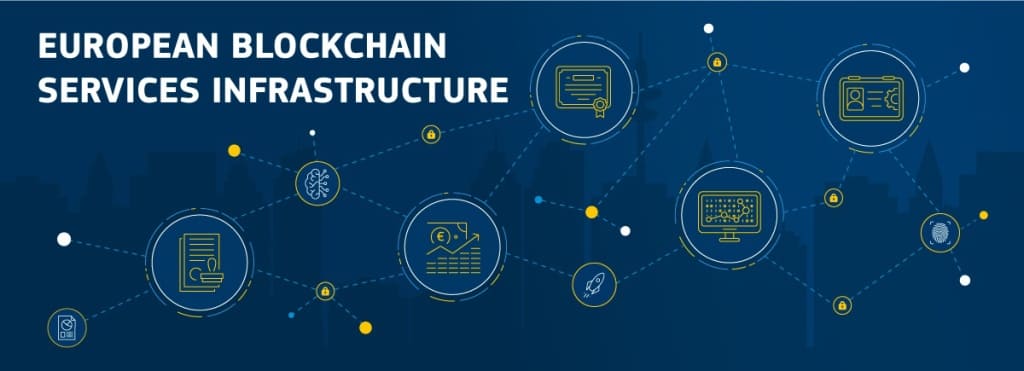The European Blockchain Services Infrastructure (EBSI) is exploring ways to support secure document sharing. According to the initiative, the main advantages of using blockchain technology are enhanced security, greater transparency, improved traceability, increased efficiency and speed, and reduced costs.

In the coming years, Europe will completely shift to full digitisation of the paperwork that is necessary for the free movement of goods, services, capital and people within the European single market. As a result, documents with an official value that are printed on paper or plastic cards will no longer have a physical existence. And once the transition is over, it will lead to trustworthy, faster and cheaper online verification processes.
The greatest challenge to this goal is not actually how to digitise documents and share them over the internet, but how to replace paper-based checks with digital verifications, in a trusted way. Whereas the European regulatory framework is being shaped and implemented to allow moving beyond paper, there is a discussion regarding the technical means.
Secure Document Sharing
EBSI explores a method where blockchain and cryptography can be applied to enable secure information sharing. In this pattern, the verifiable credentials (documents) can contain claims about the citizen’s nationality, university degree, driver’s license etc. And those claims will be confirmed by a corresponding authority using electronic signatures.
Then, cryptographic hashes would be recorded on blockchain along with the status of the verifiable credential. The blockchain will not store the data itself.
Data and documents will be stored in a digital wallet by the citizen or particular organization that is the holder of the information. Citizens will be able then to create a verifiable presentation, containing data from one or more credentials, as supporting evidence to real-life transactions such as changing address or applying for a job.
In order for that pattern to be widely adopted on EU level, a few prerequisites must be fulfilled.
Goal tasks
- A fully functioning, permissioned, and publicly available blockchain network that can be trusted by European public administrations must be established. Strong governance arrangements and security controls must be in place.
- A digital identification framework is another crucial prerequisite for this pattern to work. Each public administration, business and citizen would need to get a “decentralized ID” (DID) according to the Self-Sovereign Identity principles.
- Next, a scalable solution is needed to link DIDs to their associated ‘legal’ entity.
- Finally, citizens and businesses would need to have a trusted and secure digital wallet, connected to the blockchain, to hold their DID and documents.
The Pan-European initiative, EBSI is looking to address the above-mentioned challenges at the technical and legal levels. As this pattern brings greater control over citizens’ data, it is crucial for the GovTech ecosystem to be involved. Once all of the prerequisites are fulfilled, their participation can significantly accelerate the adoption of the emerging technology, connecting governments and societies.
EBSI Use Cases
- Notarization of documents – blockchain can be utilised to create trusted audit trails, automate compliance checks and prove data integrity.
- Secure document sharing amongst customs and tax authorities in the EU.
- A Self Sovereign Identity capability, allowing Europeans to create and control their own identity without relying on centralized authorities.
- Diplomas management will significantly reduce verification costs of education credentials.





